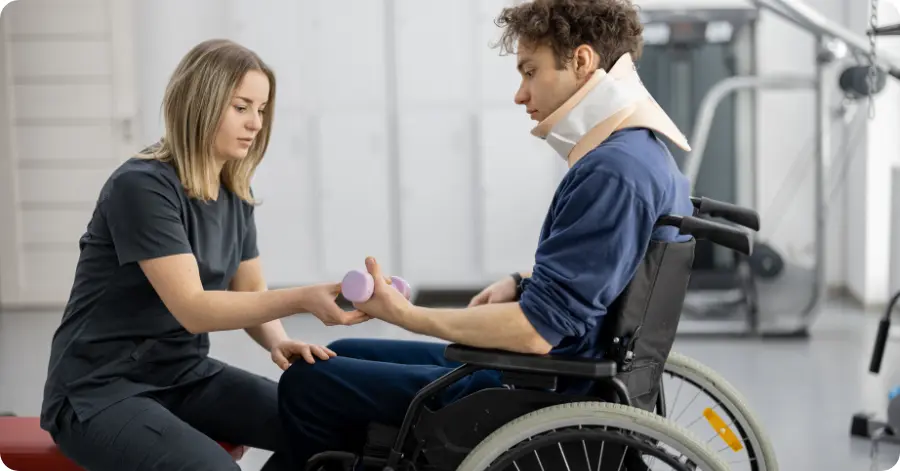Did you know that in 2019, the United States had about 223,135 traumatic brain injury (TBI) hospitalizations? That comes out to about 611 cases every day, and that’s excluding those treated in an emergency department or who did not receive help!
Keep reading to learn more about the symptoms of TBIs and explore the path to recovery for occupational therapy and traumatic brain injuries.
Potential Long-Term Symptoms of TBI
Head injuries can happen to anyone, especially when people experience a head bump, blow, jolt or gunshot. Such accidents can cause damage to the brain tissue, which may be classified as a:
- Routine planning and motivation
- Fatigue management
- Memory strategies
- Sleep hygiene
- Return to work support
- Anger/behavioral health management
- Home environment optimization
- Facilitated discharges
- Accessing community facilities (i.e. supermarkets, gyms and cinemas)
Path to Recovery
Partnering with a caring and experienced occupational therapist and evidence-based treatment for TBI can be life-changing. For example, one clinical study charted the progress of a 33-year old who suffered a TBI after falling from a 28′ high roof, with performance and life satisfaction at the top of his five occupational therapy goals. Specifically, he wanted to return to work, drive, cook, pay bills and rejoin his basketball team.
To achieve these goals, the occupational therapist needed to formulate a treatment plan that could address the personal challenges the patient was dealing with as a result of his brain injury: self-awareness, behavioral and communication skills, understanding emotions as well as managing poor memory.

Among the interventions used by the occupational therapist was goal attainment scaling, which fostered participation and accountability by the patient. Additionally, the occupational therapist employed restorative and compensatory strategies, such as automated reminders, to help the patient cope with short-term memory challenges. After undergoing six months of occupational therapy, the patient was able to meet his five goals and attain a better quality of life.
Much like the example above, occupational therapy is tailored to the specific goals and challenges a patient is facing. For example, someone who needs to improve motor function could be helped through exercise and computer-based interventions such as virtual reality. On the other hand, interventions for someone with cognitive impairments may include training in techniques such as encoding, a practice that focuses on shifting information from short-term memory to more permanent long-term memory.
Delivering Optimal Care to Each Patient Living With a TBI
While occupational therapy delivers critical benefits to people living with TBIs, it often requires long work hours and extensive record-keeping. However, occupational therapists can use technology to reduce their administrative burdens and enhance patient engagement. Today’s leading automation software can streamline routine tasks while allowing providers more time with patients and less time burnt-out.
Here at Raintree, we are dedicated to providing scalable, powerful software for rehab therapy practices. Whether it be workflow automation, comprehensive clinical documentation, business intelligence, or revenue cycle management, our rehabilitation and occupational therapy software is built to boost patient engagement and ease provider workloads.
- Seizures
- Inattentiveness
- Unusual irritability
- Loss of interest in their favorite activities or toys
- Unusual drowsiness



